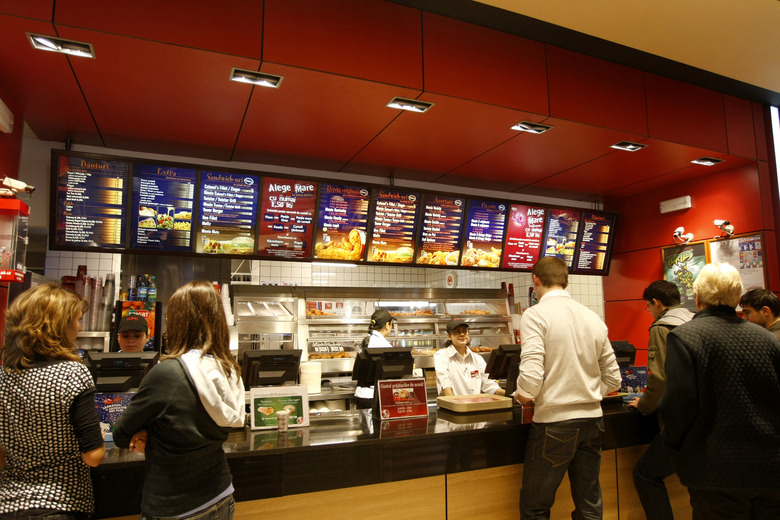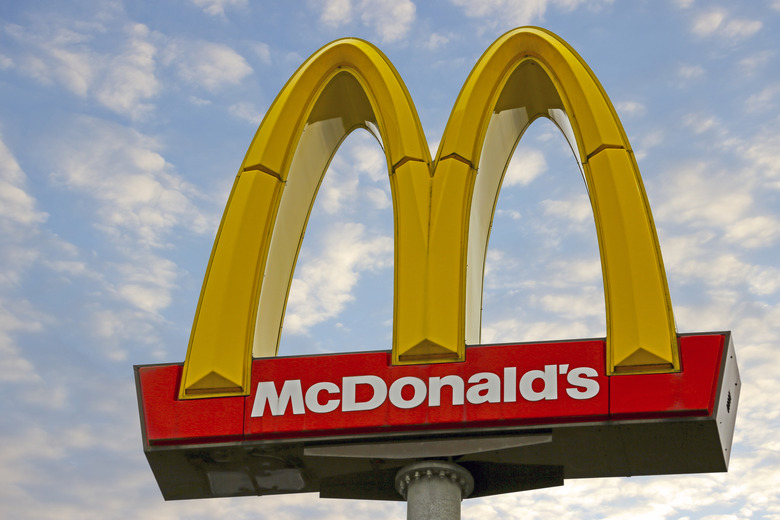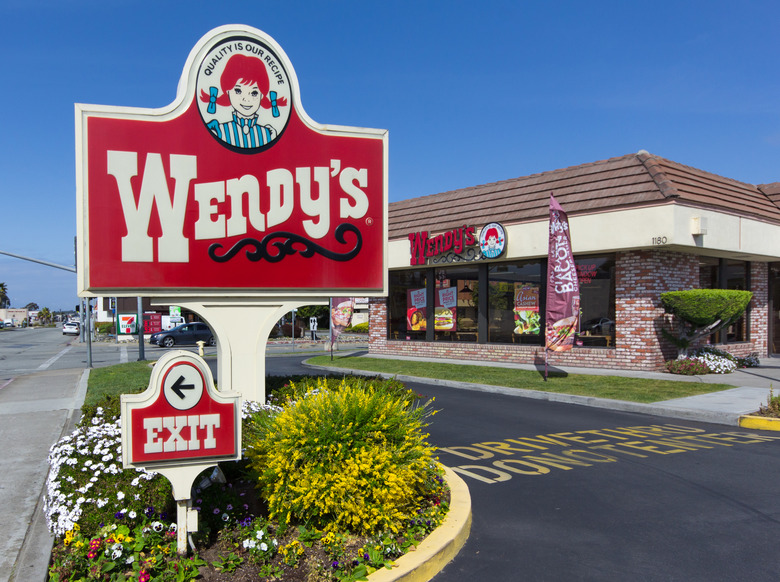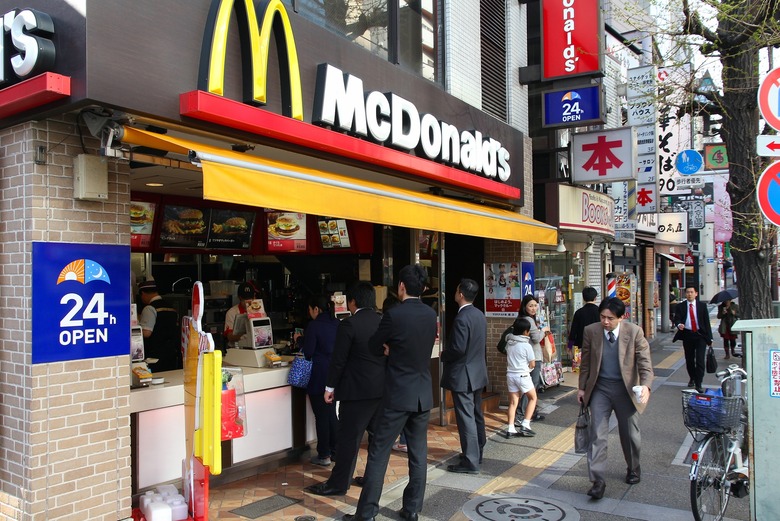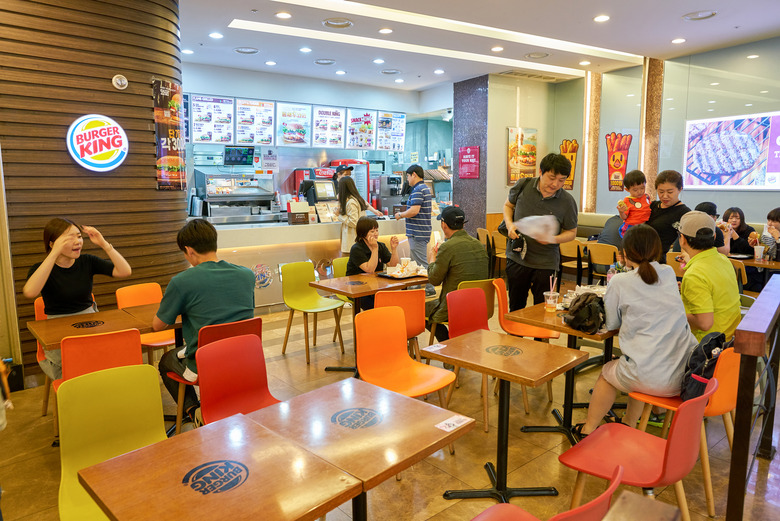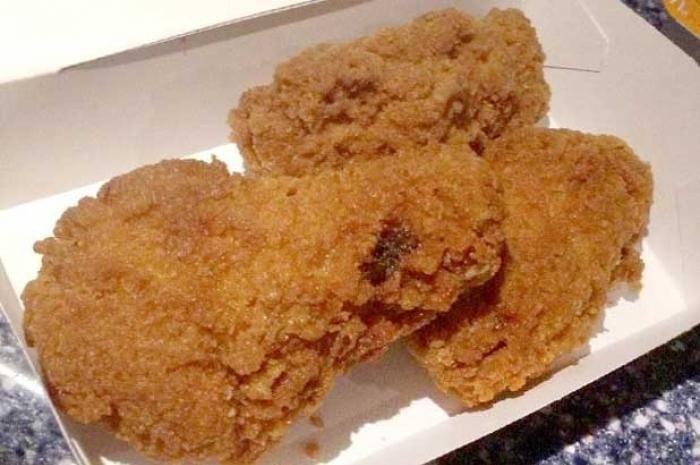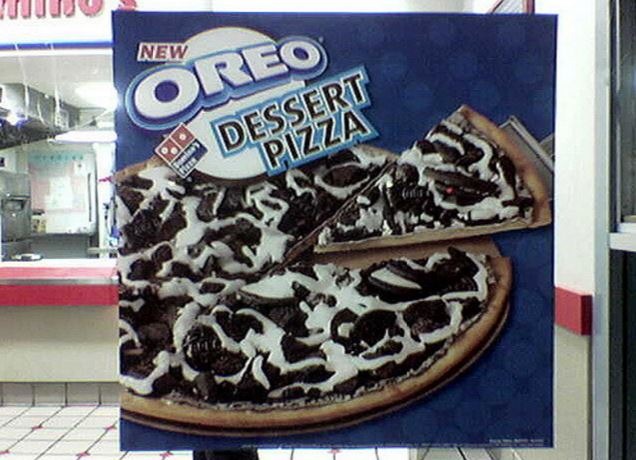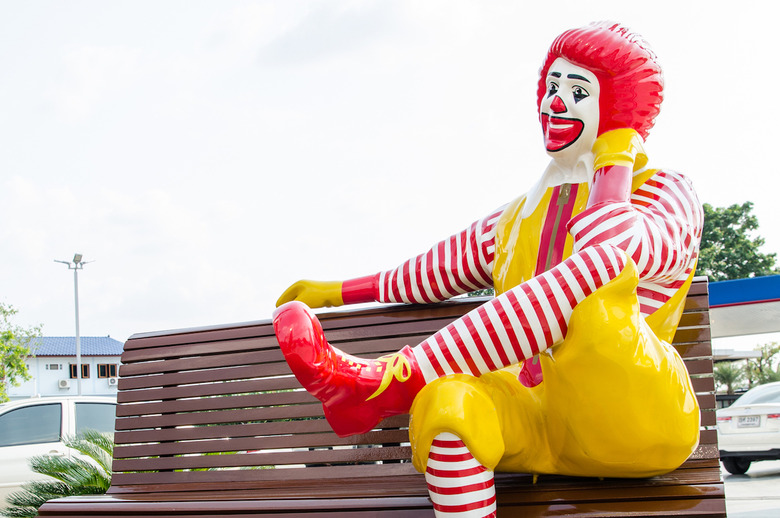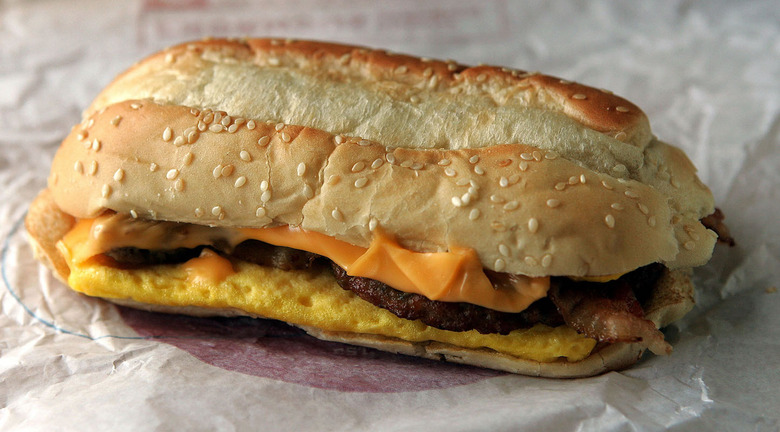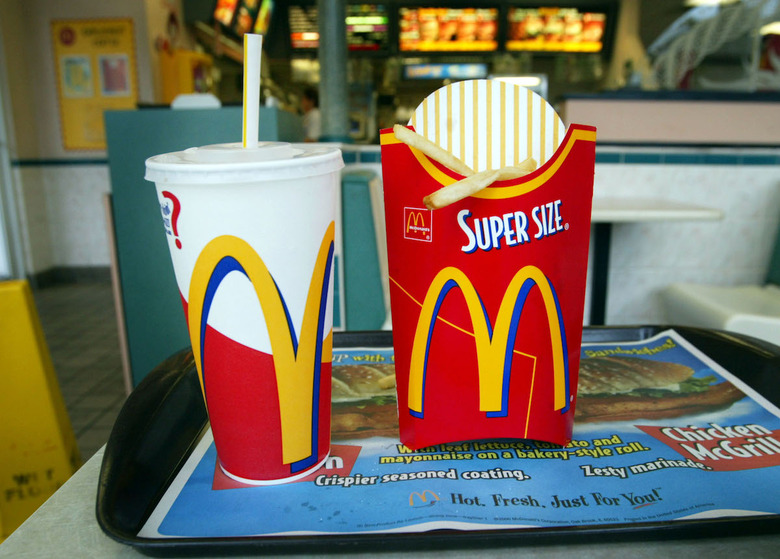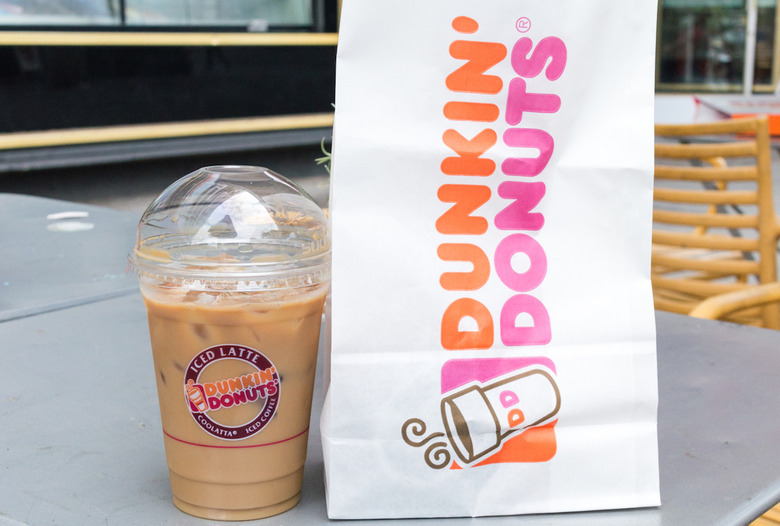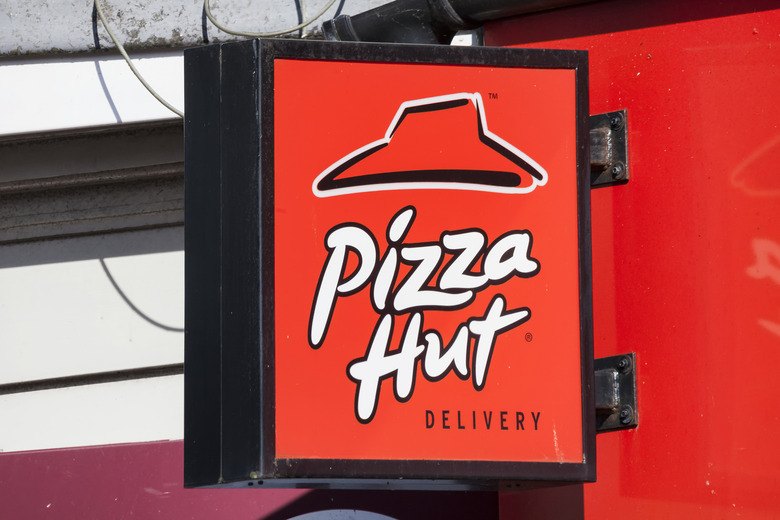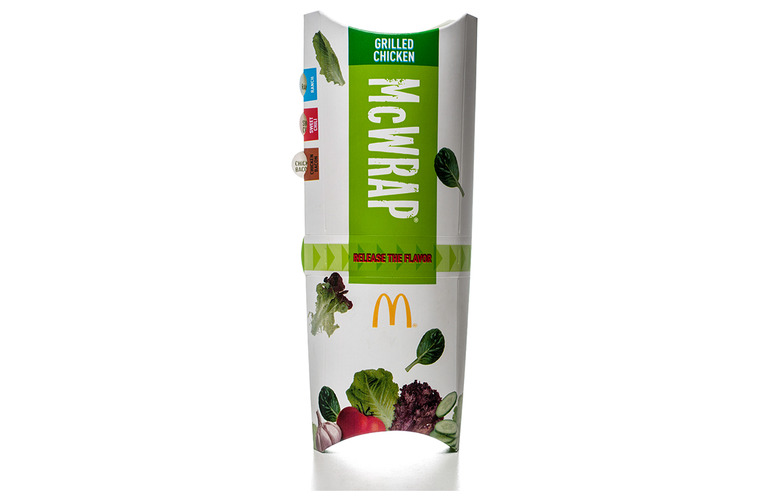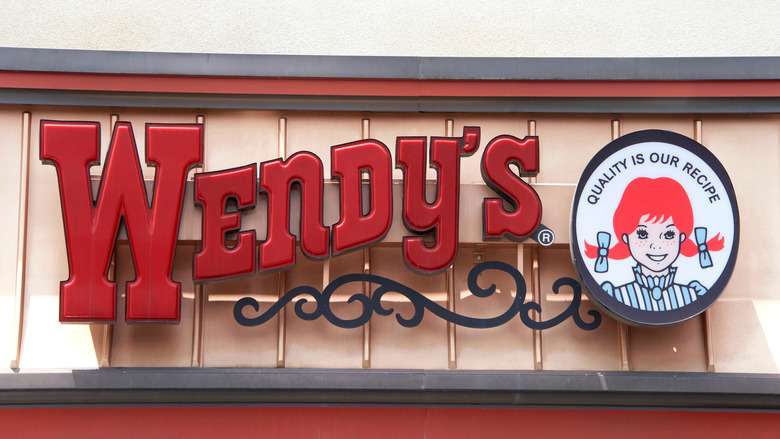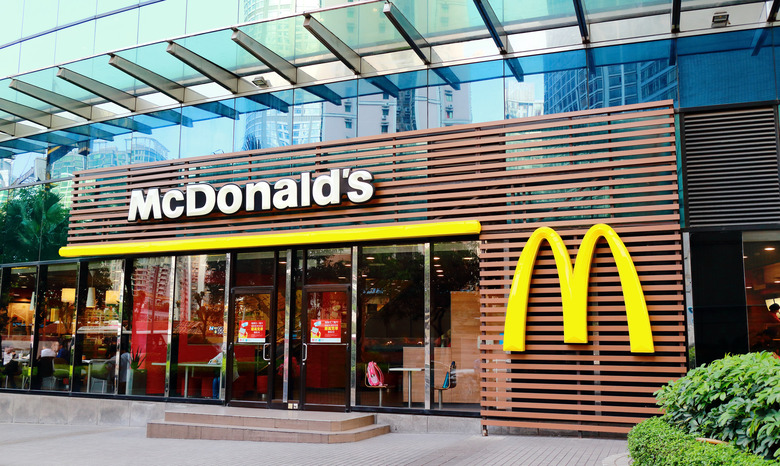The Most Disastrous Fast Food Menu Fails Of All Time
In many ways, fast food chains are like reality TV celebrities: we cheer for them when they succeed, but when they fail miserably we secretly have a chuckle at their expense. While every chain has its fair share of successes, at times they've also fallen, and fallen hard. Here are 14 of the most embarrassing failures in the history of fast food.
McDonald’s Arch Deluxe
McDonald's spent more money on the advertising campaign for the Arch Deluxe in 1996 than it had on any other single item in its history. Costing the company more than $150 million to market, the Arch Deluxe — a quarter-pounder on a split-top potato bun — flopped, making the sandwich a very expensive mistake. The burger was geared toward adults, with add-ons like circular peppered bacon, leaf lettuce, Spanish onions, and a mustard-mayo sauce, and the unconventional ads included kids looking at the burger and saying things like, "I don't understand what the big deal is." When that approach didn't work, new TV ads featured Ronald McDonald out partying and playing pool, a decided shift from the restaurant's family-friendly image.
Wendy’s Superbar
For a period in the '80s and '90s, Wendy's expanded their salad bar into a full "Superbar" buffet. Salad, fruit, Mexican fare, and pasta were all available for a low price (usually $2.99), and it was a big success. Too much of a success, actually: it was difficult for employees to keep the buffet stocked and clean while performing their usual behind-the-counter duties, and customers would help themselves to a few too many free refills. The Superbar disappeared in 1998, and Wendy's discontinued all salad bars in 2006.
McDonald’s McLean Deluxe
In 1991, McDonald's tried to just on the low fat craze bandwagon, crafting a burger dubbed the McLean Deluxe, intended to show critics that the fast-food giant could offer low-fat options. The advertising campaign bragged about a new kind of burger that was 91 percent fat-free with 10 grams of fat, compared to the Big Mac's 26 grams of fat. The burger actually contained seaweed that was meant to bind the meat together as a way of lowering the fat content. Needless to say, the burger was not a hit with customers, and critics dubbed it the "McFlopper."
Burger King’s Table Service
Back in 1991, Burger King thought that it would be a good idea to let customers order their food between the hours of 5 and 8 p.m., then take a seat at their table, snack on free popcorn, and have their food brought to them. Most people really didn't mind bringing their own food to their table, so this idea quickly fizzled out thanks to that old adage: if it ain't broke, don't fix it.
McDonald’s Mighty Wings
McDonald's finally rolled out chicken wings nationally after years of trial and error in September 2013, at the price of about a dollar per wing. They were spicy, crunchy, and generally well-reviewed. The chain bought 50 million pounds of wings with plans to leave them on the menu until supplies ran out, and was hoping to make them a permanent addition after that, but things didn't go exactly as planned. Sales quickly petered out, and McDonald's was left with 10 million pounds of unsold wings. The failure was attributed to price, spiciness, unattractive appearance, and lack of interest from penny-pinching customers. Many franchises resorted to selling them off at clearance prices of 60 cents per wing.
Domino’s Oreo Dessert Pizza
A giant cookie, topped with vanilla sauce and crumbled Oreos, served hot. What could go wrong? A whole lot, apparently. This attempt at a dessert pie appeared at Domino's locations in 2007, was universally panned for being too sweet, chewy, and generally unappealing, and disappeared shortly thereafter.
McDonald’s McDLT
On the surface, it was a good idea: Serve a burger in a Styrofoam container with two separate compartments, one containing the hot beef patty and bottom bun and the other with the cool lettuce and tomato and the top bun. Put them together and you've got the perfect burger! The McDLT stuck around for six years between 1984 and 1990, but was discontinued due to complaints that the large amount of Styrofoam in the packaging was environmentally unfriendly.
Burger King’s Enormous Omelet Sandwich
The mid-2000s was the era of the "EXTREME," and in 2005 Burger King attempted to cash in by pairing that with the growing trend of fast food breakfast sandwiches by introducing the Enormous Omelet Sandwich. Comprised of eggs, cheese, bacon, and sausage on a sesame seed roll (add ham and you've got the Meat'normous Omelet Sandwich), this artery-clogging overload performed well at first, but sales fizzled out once consumers realized that they probably didn't want to eat 330 milligrams of cholesterol for breakfast.
McDonald’s Super Size
In the mid-1990s, McDonald's launched a campaign allowing customers to "Super-Size" their meal for an added fee. For a while, the idea sold, and customers around the world were bulking up their orders, as well as calorie counts. After the release of the documentary Super-Size Me, which exposed the dangers of McDonald's and fast food in general, the concept of super-sizing a meal went rapidly downhill, resulting in the company pulling it from menus in 2004.
Dunkin Donuts’ Free Iced Coffee Day
Dunkin' Donuts announced back in 2012 that in honor of their 60th anniversary, participating locations would be giving away free iced coffee for one day only. Sounds great, right? The catch: "participating locations" only existed in five states. When people showed up to their local DD's expecting free iced coffee, they weren't happy to be turned away, leading to a major headache for corporate and franchise owners alike.
Pizza Hut’s Priazzo
$15 million went into marketing this Pizza Hut creation in 1985, which was essentially a pizza with two crusts, piled with meat and cheese, meant to resemble a deep-dish pizza. While sales were pretty good (and it's still fondly remembered by many to this day), the fact of the matter was that it simply took too long to prepare, and it was removed from menus after a few years.
McDonald’s McWraps
Introduced in 2013 as a potential "Subway buster" intended to attract a younger clientele, these potentially healthy-ish wraps came with your choice of fried or grilled chicken, cheese, bacon, a selection of sauces, and a couple ingredients that had never before been served at McDonald's, like cucumbers. But they were incredibly labor-intensive to prepare (employees had to steam the tortilla, chop the ingredients, stuff and roll the wrap, and fit it inside a cardboard sleeve), and added to the stress already placed on employees caused by the addition of all-day breakfast. The underperforming menu item was scuttled last April.
Wendy’s Frescata Sandwiches
Intended to offer some competition to Subway, these deli-style "artisan sandwiches" were rolled out in 2006. They sold decently, but their fatal flaw was assembly time: they took a lot longer to prepare than burgers. They disappeared from menus in 2007.
McDonald’s McAfrika
Over the years, McDonald's has released international products in different locations across the world, some to great success. However, in 2002, it released one of the worst menu items and marketing flops in the company's history. The McAfrika (consisting of beef, cheese, and vegetables in a pita), was released in Norway (one of the world's richest countries) during some of the worst famines Southern Africa had ever seen. The campaign backfired so miserably that McDonald's took the item off its menus and set up donation boxes for charities in support of famine relief in Africa. In an inexplicably boneheaded move, the company re-launched the sandwich (complete with an "exotic African sauce") in 2008 to promote the 2008 Beijing Olympics, and – surprise! – it also received an extremely negative response.
